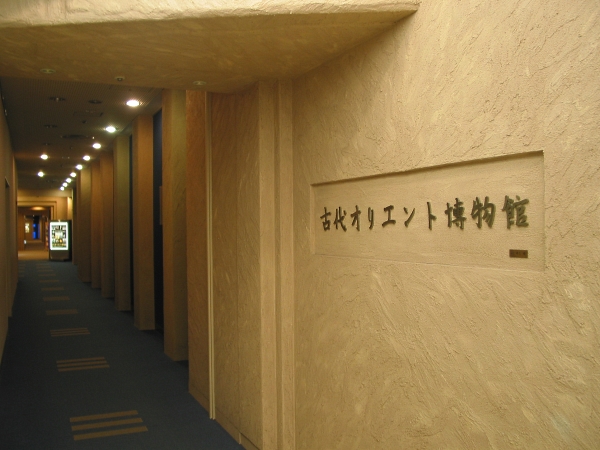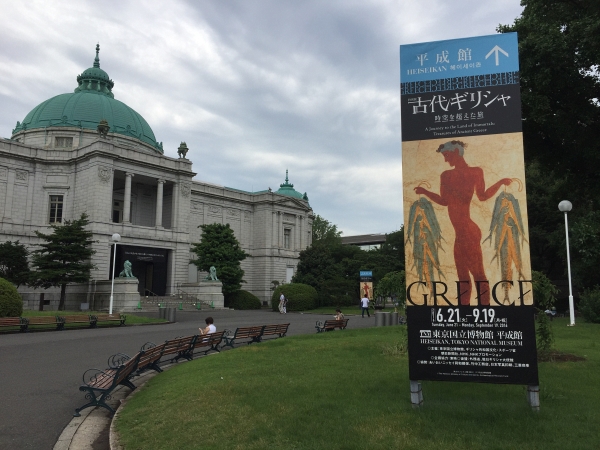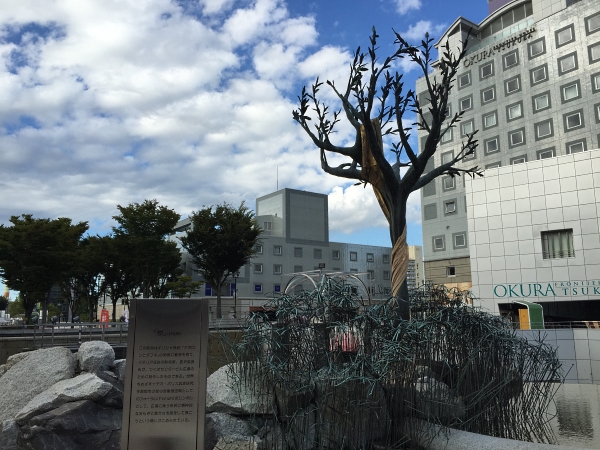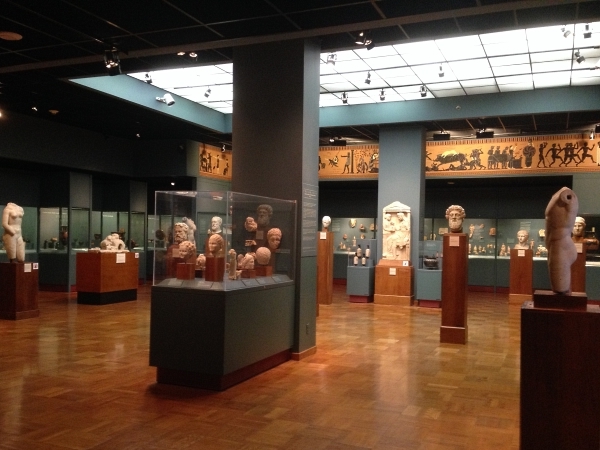
In 2012, when I visited Tokyo’s Ancient Orient Museum (古代オリエント博物館 Kodai Oriento Hakubutsukan) for the first time, I found it to be a small but well-designed museum housing many small artifacts and a few larger replicas. Well, it seems I’m back in Japan, and now that I live much closer I had definitely intended to visit the museum again sometime, but that “sometime” turned to “right away” when I learned they were hosting a special exhibit about everyone’s favourite action hero, Heinrich Schliemann.
Although the exhibit – titled ギリシア考古学の父シュリーマン 初公開!ティリンス遺跡原画の全貌 (translated by the museum as “Father of Greek Archaeology, Heinrich Schliemann; The First Exhibition of Tiryns Original Paintings”) – featured many small items from countries Schliemann visited and excavated in, the focus was 28 original pages from Schliemann and Wilhelm Dörpfeld’s report on the excavations at Tiryns. The pages belong to the Tenri University Sankokan Museum in Nara, which not too long ago announced that they’d confirmed that many of the penciled notes in the margins were written by Schliemann. In all honesty, I found these pages to be a strange thing to build a museum exhibit around and I’m baffled that they’re being sent around the country. These are pages that have been published and are not all that difficult to obtain. I admit I was impressed by the fact that I was standing mere inches from pieces of paper that Heinrich Schliemann himself wrote on (in English! so I could read it and everything!!), but that’s after many hours spent reading about him/watching documentaries about him/watching ridiculous action movies about him. I’m not sure how much interest this exhibit really holds for the more casual Schliemann fan.
Actually, the way the Ancient Orient Museum presented Schliemann was perhaps more interesting to me than the items on display. WOW they are in love with him. The first room of the exhibition showed three short videos on a loop, and in one of them a university professor from Nagoya raves about Schliemann’s genius. Schliemann’s trench is mentioned, but only because it shows his legacy still lives on at Troy; there is no mention of the artifacts it surely destroyed. This is especially odd when a corner of the museum is currently dedicated to tracking the ongoing destruction at Palmyra, accompanied by an upsetting message about how the residents of the 21st Century have failed in our duty to protect it.
A sign near the end of the exhibit started to talk about how not everyone thinks well of Schliemann, but only mentioned that the famous story of his first encounter with the Trojan War might be fiction before veering back to talk about what an amazing man he was. In the whole exhibit there was not a single mention of Frank Calvert, but there was a comic strip near the entrance that told Schliemann’s life story in a colourful manga style (understandably but still strangely focused on his trip to Japan that one time) (I was so upset that I wasn’t allowed to take pictures of it). It was bizarre to visit this exhibit after reading David A. Traill’s Schliemann of Troy, which presents Schliemann as very much less than perfect as both a person and an archaeologist.
Another odd sign was the one stating that the Trojan Horse appears in the Iliad. Come on guys, that’s a rookie mistake.
One other thing I feel I must mention is that this exhibit felt less like a special exhibit and more like an overlay. Every other special exhibit I’ve visited has been in its own part of the museum, separate from the regular exhibits, but maybe the Ancient Orient Museum doesn’t have the space for that? The Schliemann exhibit was mixed right in with their regular exhibit. Their recreation of Schliemann’s hut, for instance, was the same as their recreation of an ancient house, just with different furniture, and their stela and Rosetta Stone replicas were still in their usual spots. My favourite part of all this was the Egypt room, which maybe wasn’t changed at all from its usual arrangement except for the addition of a sign at the entrance that more or less said, “What did Schliemann think of Egypt during his travels there? Let’s look at these artifacts and imagine what he might have thought.”
Overall I found it to be a very strange exhibit and I’m not sure I would recommend it unless you already have a strong interest in the subject. According to the video in this article, the pages will be travelling to Yokohama and Nagoya next year, so keep an eye out if you’re in the area. I admit I’m tempted to visit them in Yokohama just to see how differently they’re presented there.
Visitors to the museum aren’t allowed to take pictures, but you can find a few photos on the exhibit’s official page and the museum’s official Facebook page. Or you can look below the jump for three useless pictures I took of posters!
read more »



